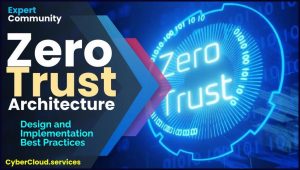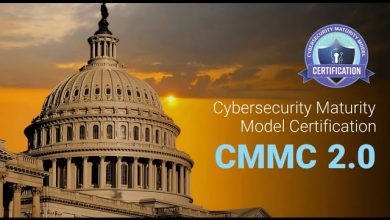Best Practices for Designing and Implementing Zero Trust Architecture
 Introduction to the Executive Guide to Zero Trust Architecture
Introduction to the Executive Guide to Zero Trust Architecture
Zero Trust is a security model that operates on the principle of “never trust, always verify.”
Zero Trust Architecture (ZTA) has emerged as a cornerstone of modern cybersecurity, addressing the limitations of traditional perimeter-based security models. With the rise of remote work, cloud computing, and sophisticated cyber threats, organizations must adopt a security framework that assumes no implicit trust and verifies every access request.
Unlike traditional models that assume entities inside a network perimeter are trustworthy, Zero Trust requires continuous authentication, authorization, and validation of users, devices, and applications, regardless of their location. It aims to minimize the attack surface, prevent lateral movement, and ensure secure access to resources.
Zero Trust Architecture is not a one-size-fits-all solution but a strategic approach to securing modern enterprises. By focusing on the protect surface, enforcing strong identity and access controls, segmenting networks, and embracing continuous monitoring, organizations can significantly reduce their risk of compromise.
A phased implementation, stakeholder engagement, and automation are critical to success. As cyber threats evolve, Zero Trust provides a resilient framework to protect assets, ensure compliance, and build trust in an increasingly interconnected world.
By following these best practices, organizations can design and implement a Zero Trust Architecture that is robust, scalable, and aligned with their unique needs. Start small, iterate often, and stay vigilant—because in a Zero Trust world, security is a journey, not a destination.
In today’s rapidly evolving digital landscape, traditional cybersecurity models are no longer sufficient to protect organizations from sophisticated threats. The rise of remote work, cloud adoption, and increasingly complex cyberattacks has exposed the vulnerabilities of perimeter-based security, where trust is assumed once inside the network. Enter Zero Trust Architecture (ZTA)—a transformative security paradigm built on the principle of “never trust, always verify.” Zero Trust redefines how organizations secure their data, applications, and systems by requiring continuous authentication, authorization, and validation for every user, device, and connection, regardless of location.
This executive guide is designed to empower business leaders, IT decision-makers, and security professionals with the knowledge and strategies needed to design, implement, and sustain a robust Zero Trust Architecture. Whether you’re safeguarding sensitive customer data, protecting intellectual property, or ensuring compliance with regulatory standards, Zero Trust offers a proactive, resilient framework to minimize risk and strengthen your organization’s security posture.
Why Zero Trust Matters Now
The modern enterprise operates in a borderless environment. Employees access resources from diverse locations, devices, and networks, while cloud-based applications and hybrid infrastructures have blurred traditional network boundaries. Meanwhile, cyber threats—ranging from ransomware to supply chain attacks—are growing in frequency and sophistication. According to recent industry reports, the average cost of a data breach in 2024 exceeds $4.5 million, with insider threats and misconfigured systems among the leading causes.
Zero Trust addresses these challenges by assuming that no one, inside or outside the organization, can be trusted by default. It emphasizes:
- Explicit verification of every access request.
- Least privilege access to limit exposure.
- Continuous monitoring to detect and respond to threats in real time.
- An assume-breach mindset to design systems resilient to compromise.
For executives, Zero Trust is not just a technical framework—it’s a strategic imperative that aligns cybersecurity with business objectives, protects brand reputation, and fosters customer trust.
What This Guide Offers
This guide provides a comprehensive roadmap for adopting Zero Trust Architecture, distilling best practices into actionable insights for organizations of all sizes and industries.
Through real-world examples, frameworks like NIST SP 800-207 and CISA’s Zero Trust Maturity Model, and guidance on automation and stakeholder engagement, this guide equips you to build a Zero Trust program that is scalable, cost-effective, and aligned with your organization’s unique needs.
The Path Forward
Adopting Zero Trust is a journey, not a one-time project. It requires commitment, collaboration, and a willingness to evolve alongside emerging threats and technologies. This guide will help you navigate that journey with confidence, offering strategies to secure executive buy-in, train employees, and leverage tools like AI-driven analytics and cloud-native security solutions.
By embracing Zero Trust, your organization can reduce its attack surface, enhance resilience, and position itself as a leader in a world where trust must be earned, not assumed.
As you embark on this transformative process, let this guide serve as your trusted companion, providing clarity and direction to protect what matters most. Zero Trust is more than a security model—it’s a mindset that empowers organizations to thrive in an interconnected, threat-filled world.



